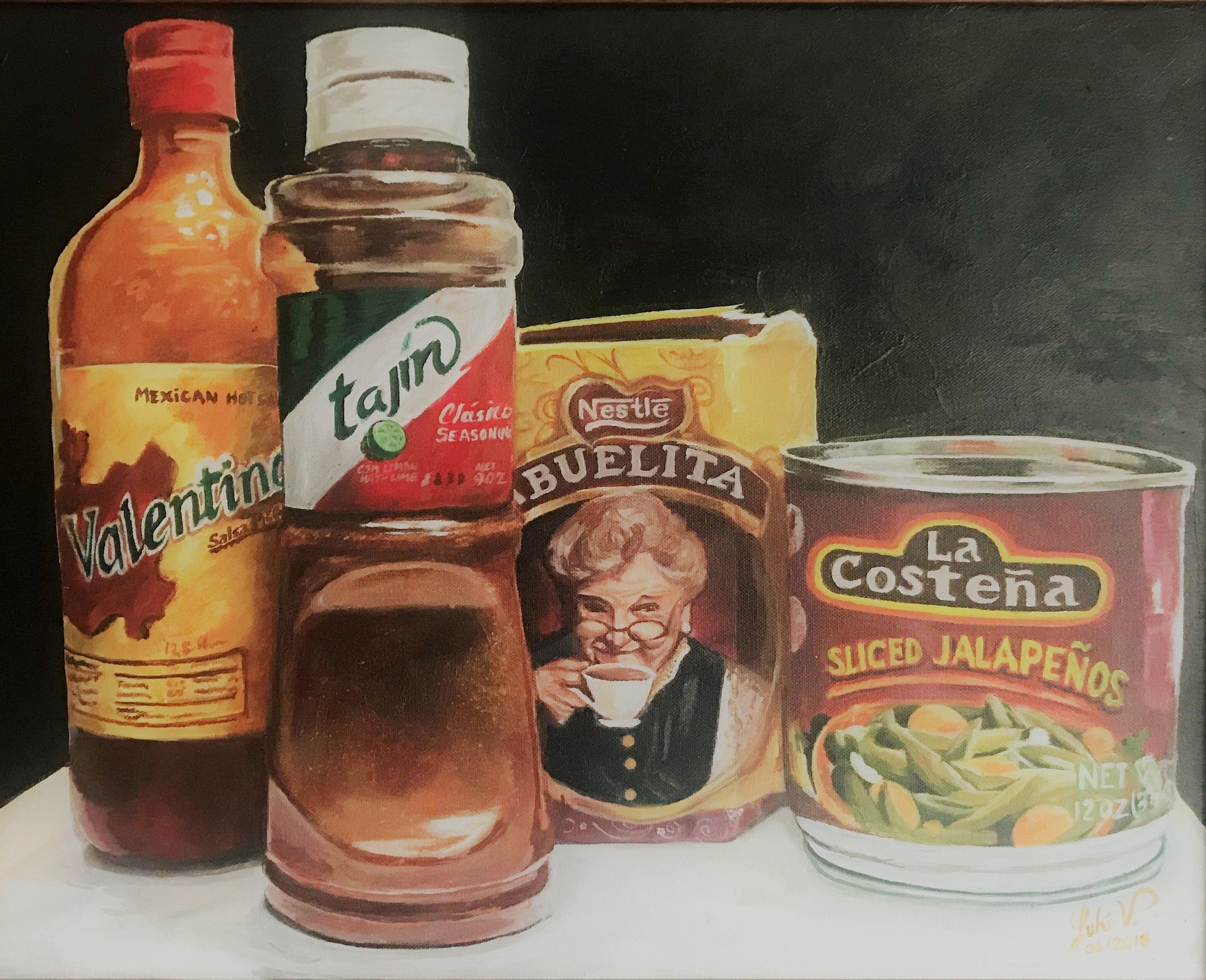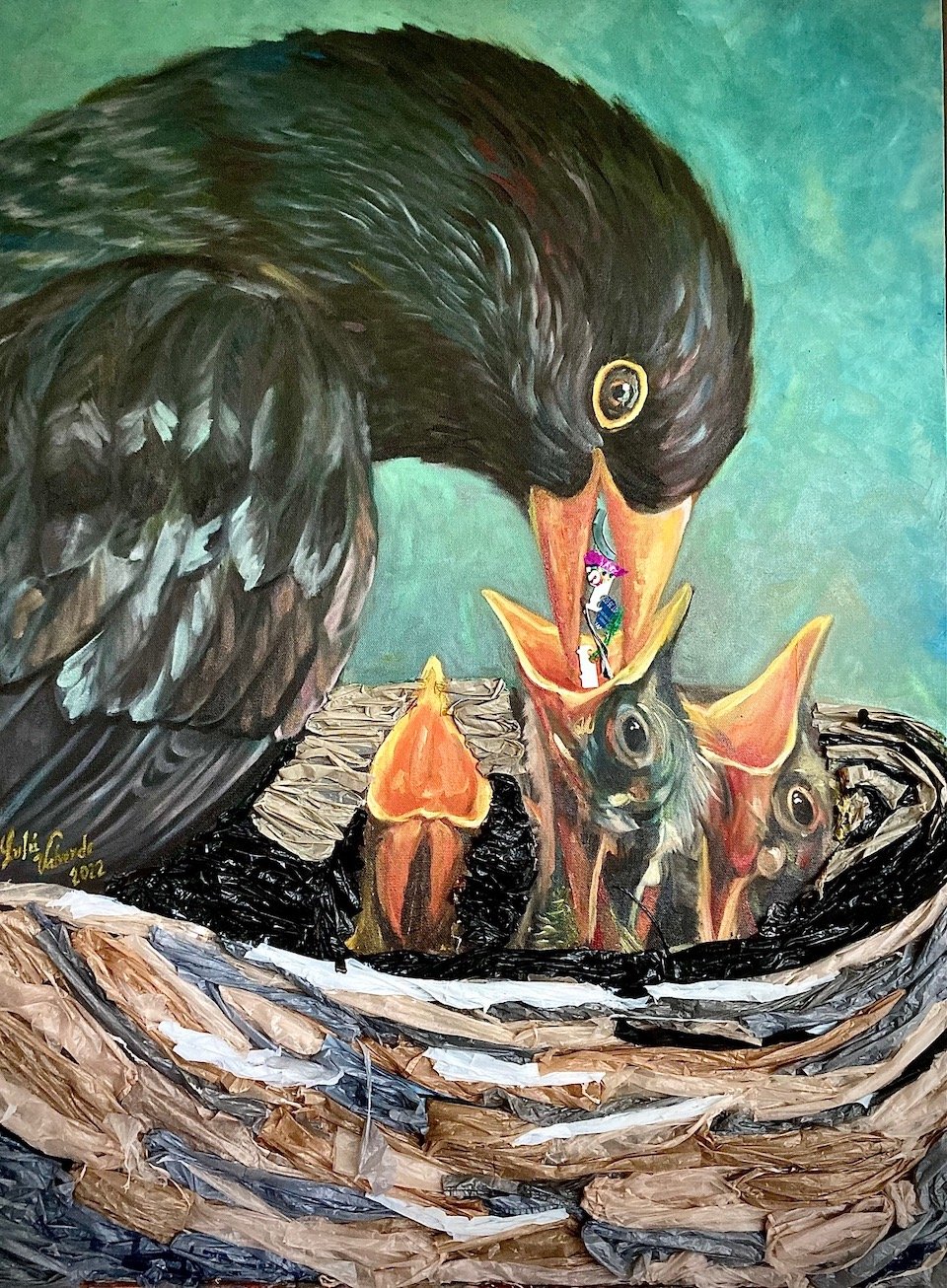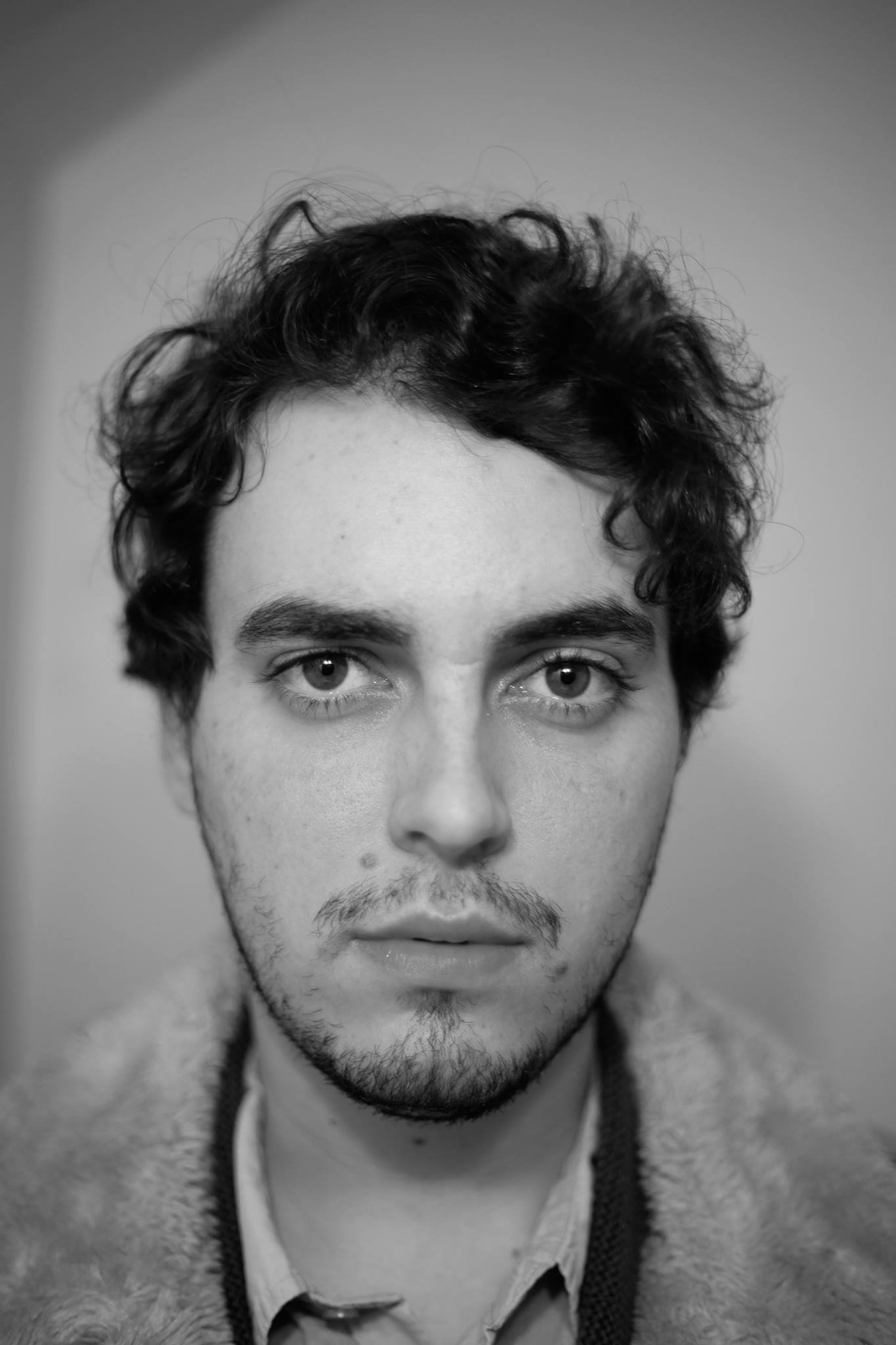Interview with artist Lourdes Valverde
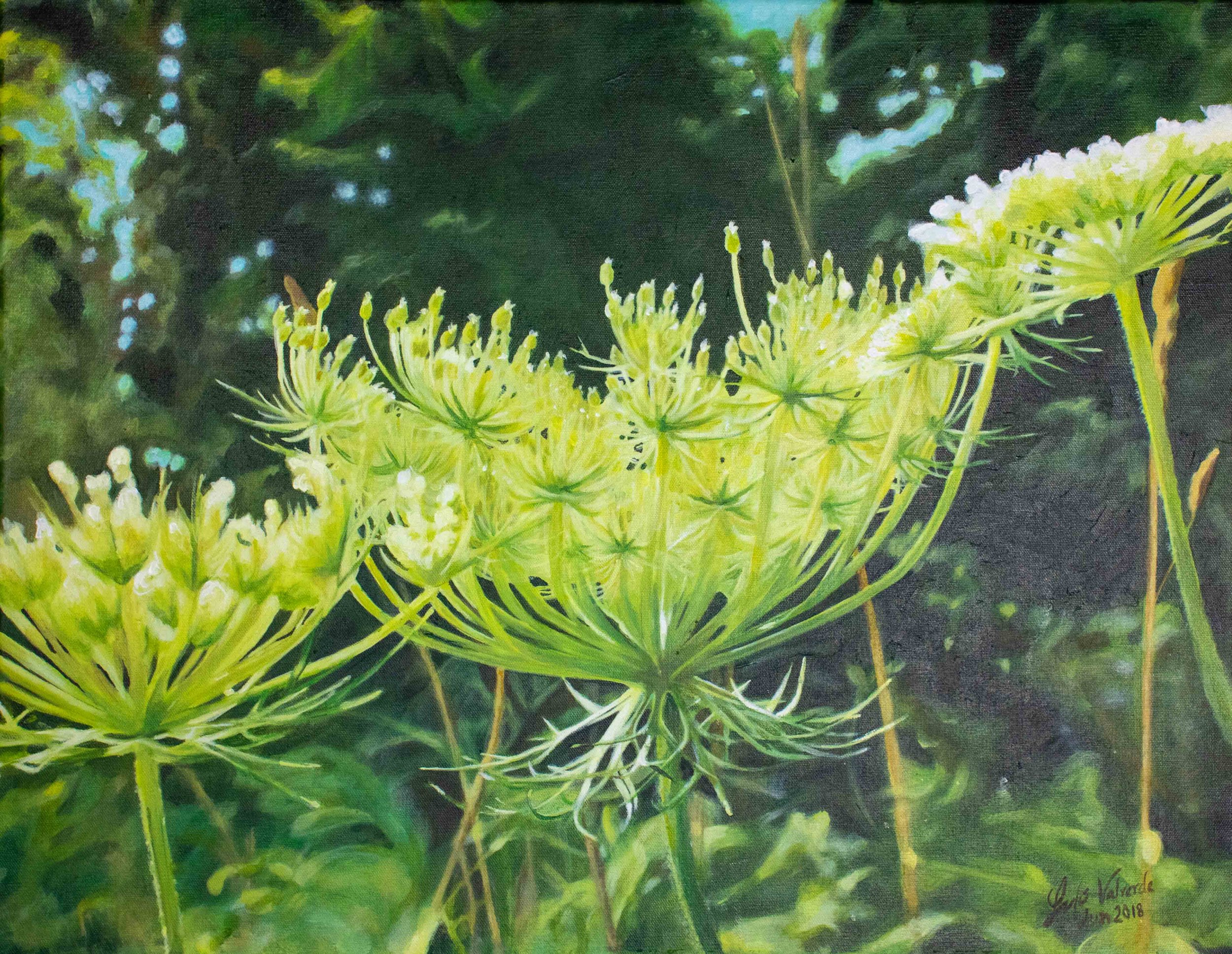
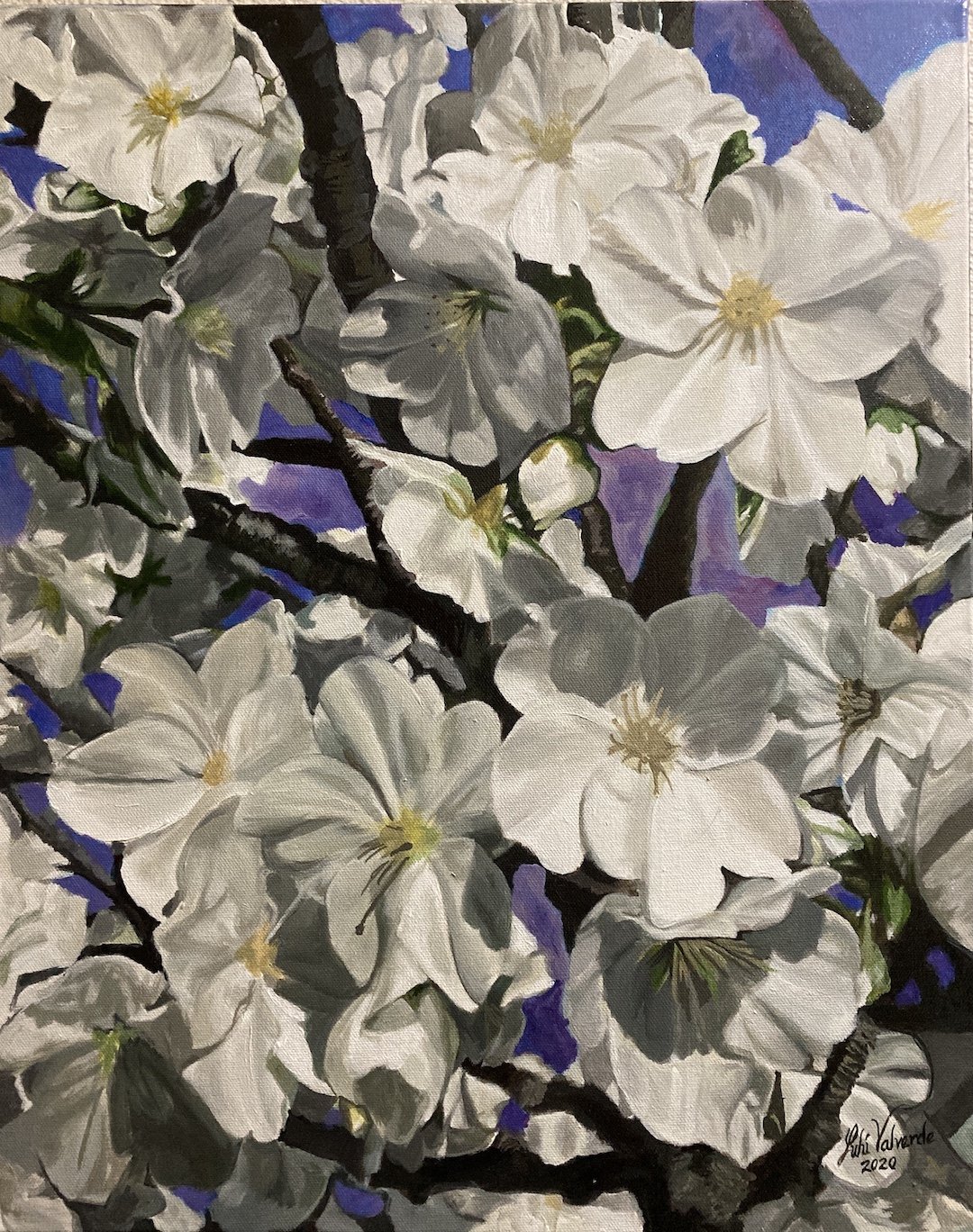
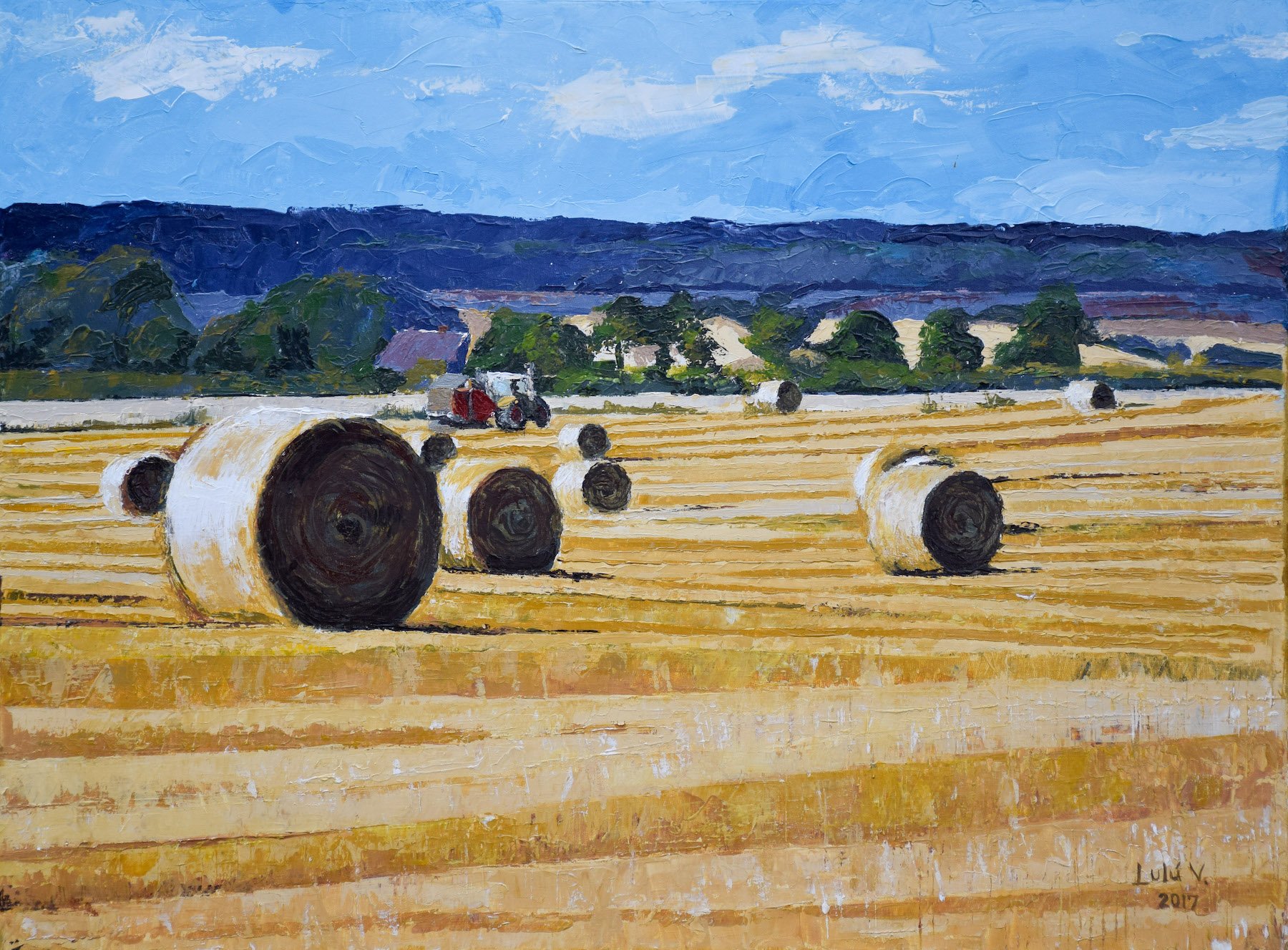
AAS: Lourdes, I believe you are originally from Mexico. Tell me about your background and what brought you to the US and Northwest Arkansas.
LV: Yes, I was born and raised in México. I am married to Alfredo Carrillo and we have 3 kids: Zoe (25 years old) living in Dallas, Texas, Andrea (21 years old) is studying arts at the Kansas City Art Institute and is represented by the same gallery as me. Alfredo Jr. is the youngest and he is studying at the University of Arkansas. We moved to NWA because of my husband's job at Walmart, where he is an IT developer.
I start taking art classes with Mrs. Evangelina de Daer when I was in high school. I have always been attracted by the arts. I was drawing all the time since middle school. I really wanted to study art after high school, but the circumstances did not allow for that.
Instead, I got my bachelor's degree in science as an industrial production engineer. I worked for a couple of years, but maternity arrived, and I left that work for a while. That gave me the time to paint again and regain my passion. My activity as a painter has been intermittent, depending on all the factors in life, but I never stopped completely.
AAS: So, art was something you did as a kid growing up, but were you encouraged to do it?
LV: I lost my mom when I was 3 years old, but my relatives told me that she worked retouching photographs by hand, putting color in the cheeks and lights in the eyes. Maybe I took something from that. I don’t remember her, but I have missed her all my life.
I was a drawing kid. I illustrated the story lessons we had in middle school. My teacher encouraged us to draw the stories after reading them. That was something that I enjoyed very much, and she thought I was the best in the class.
AAS: You’ve been and continue to be very involved in promoting Mexican culture and art, especially in NWA. Tell me about some of the work you are doing.
LV: I love my culture and my traditions, and I promote it whenever I can. I was a cultural promoter in México because not everyone there knows their own traditions or their history. I tried to share what I know and to teach my people and others about our traditions.
When I arrived in Bentonville everything was new for me, the language, the people, and the culture. However, I tried to learn what was going on in the arts. When I discovered Crystal Bridges Museum of American Art, the Museum of Native-American History, and others, I started my journey again.
One of my projects is the Day of the Dead celebration. It is one of the most beautiful and colorful traditions and I love to celebrate it. In the beginning, I was invited by the then Arts Center of the Ozarks (Now CACHE) in Springdale to help them with suggestions for the organization of this event. I suggested an art exhibition related to the topic. It was amazing and many local artists participated. We did an interview on television and I felt so important – ha, ha. That was in 2017. For the next year, I thought about doing it at Bentonville because I live in Bentonville. One of my friends pushed me to do it in a museum and we started to look for a venue. Finally, The Peel Mansion donated their venue for two days and we were so happy. The festival was made possible with work from all volunteers. We had mariachi, folkloric dance, theater, workshops, and storytelling from the Bentonville Public Library. Also, the Arkansas Arts Academy presented an amazing dance performance with their students.
Finally, the most important thing, we did two ofrendas, one for the community and a more formal ofrenda showing all the elements of an Altar. The attendance was amazing – around 500 people came, and everybody was so happy. In the beginning, I was concerned about how this festival would be accepted because nothing like this had ever taken place here. But I really enjoyed seeing the smiles in the hearts of the people. It was such a success that The Museum of Native American History asked us to make the museum the festival’s home. This year we did our 5th Bentonville Day of the Dead Festival.
For the last two years I have been working with the Mexican Consulate on projects that involve the Mexican community in the area. In 2021 they invited me to participate in the 2nd. Congress for Mexican Artists living in the United States representing three states: Arkansas, Oklahoma, and Missouri. The event took place in Mexico City. The goal of the Congress is to help artists of all disciplines to network, share and develop projects between the two nations (México and the United States). I was so happy to have this opportunity and I was asked to participate again this year. We just met last week in Tijuana, one of the most important and active cultural centers in México. The 2023 project is a traveling exhibition that will be visiting 17 of the Mexican Consulates in the United States starting in California. The exhibition is called “Corazon Migrante” and has 41 artworks from 21 artists. The exhibition will end next December in “Los Pinos Museum” in México City. And we are already planning the next one for 2024!
AAS: You organized a recent exhibition Goal 14 Water for Life. How did that come about and who participated?
LV: This idea came from one of the congresses in México City. One of the artists suggested the topic. Unfortunately, he was not able to work on it, so I took it over and invited three other Hispanic artists to make it happen. They are Briseida Ochoa, David Gomez, and Dexta Rodriguez. They are very talented and have very different techniques and styles. I wanted to do it with artists that could, at some moment, join the art network created in the congress. This exhibition is our attempt to call attention to help the environment. We focused on Goal 14 from the Agenda 2030 for sustainable development proposed by the United Nations. Goal 14 is the global concern about water pollution, and we focused on the excessive use of plastics. We want this exhibition to be seen by the community around us and, if possible, for it to travel out of the state. We worked on this project for a year looking for venues and sponsors. The exhibition has already been in two places: Brightwater in Bentonville and Art Ventures NWA Gallery in Fayetteville. The next venue is ACANSA Gallery in Little Rock. The opening will be on January 14 and it will be there until February 12. Then we will be at River Valley Art Center in Russellville from April 15 to May 13. We want to add new venues, we will see if there is some interest in this.
AAS: You had several pieces in that exhibition. I want to ask you about two paintings, in particular. The first is Suffocation. It is a beautifully executed painting and very powerful. Tell me about that piece and why that image.
Suffocation, acrylic on canvas, 40" x 30"
LV: This piece calls attention to all the plastic bags in the rivers and seas. Plastic bags are trapping fish and many other sea animals. There are more than 100,000 animals dying every year in the sea because of plastics. The question is: how would you feel if you were in their place? What if you were trapped in a bag? What if you died because of plastic? We need to recognize what are we doing to our environment.
AAS: The next painting, and one of my favorites is Asfixia. What were you intending for the symbolism to represent.
Asfixia, oil on canvas and mixed media (plastic mechanical pencil). 40" x 30"
LV: This painting shows the simplicity of a plastic mechanical pencil, a cheap and insignificant object and yet it possesses the power to kill. This kind of object is thrown around every day in schools by the students. They don’t care if it falls to the floor. They can get a new one in the classroom or buy a bunch of them for one or two dollars. In a simple experiment a student picked up these pencils during a semester at school. He collected more than 300 of them without really searching, only picking up the ones he found accidently. Many of these pencils would have wound up in the garbage, and in many cities, they would eventually find their way into the rivers and the sea. Plastic takes 150 years to decompose in water. The image in the painting represents the asphyxia of all the animals in the sea that suffer because of discarded plastics.
AAS: You’ve done some wonderful portraits. One of my favorites is A Light in the Dark. I especially like the way details drift off into darkness - including your signature. Tell me about that painting. Is it a portrait of someone you know?
A Light in the Darkness, oil on canvas, 20" x 20"
LV: This piece is one of my favorite pieces too. It was made during the pandemic. The darkness in the painting represents the time of desperation and uncertainty that we all suffered-a world of fear and darkness, full of death. That little light filtered on the face of the girl is the hope given by the first vaccine. It was a light of hope, it was the light at the end of the tunnel. We didn’t know if it would work for all but, that was “A light in the darkness”. The person in the painting is my daughter Andrea.
AAS: Then there is Attitude. It is a terrific image and certainly timely. What is the story behind that painting?
Attitude, oil on canvas, 30" x 24"
LV: This painting is also one of my favorites. She is my older daughter Zoe. All of us were in a very desperate time, we didn’t know what would happen to us or our loved ones. We were separated from all our friends, family, and social contacts. A lot of people had issues managing the stress, many fell sick, and many needed psychological help, but others managed to keep calm and have a very inspirational “Attitude”. That was the attitude of my daughter Zoe. She was staying home but kept waking up early, taking a shower, getting dressed, and starting the day with a smile on her face. That doesn’t mean that it was not hard for her, but she tried to get through the crisis with a better attitude.
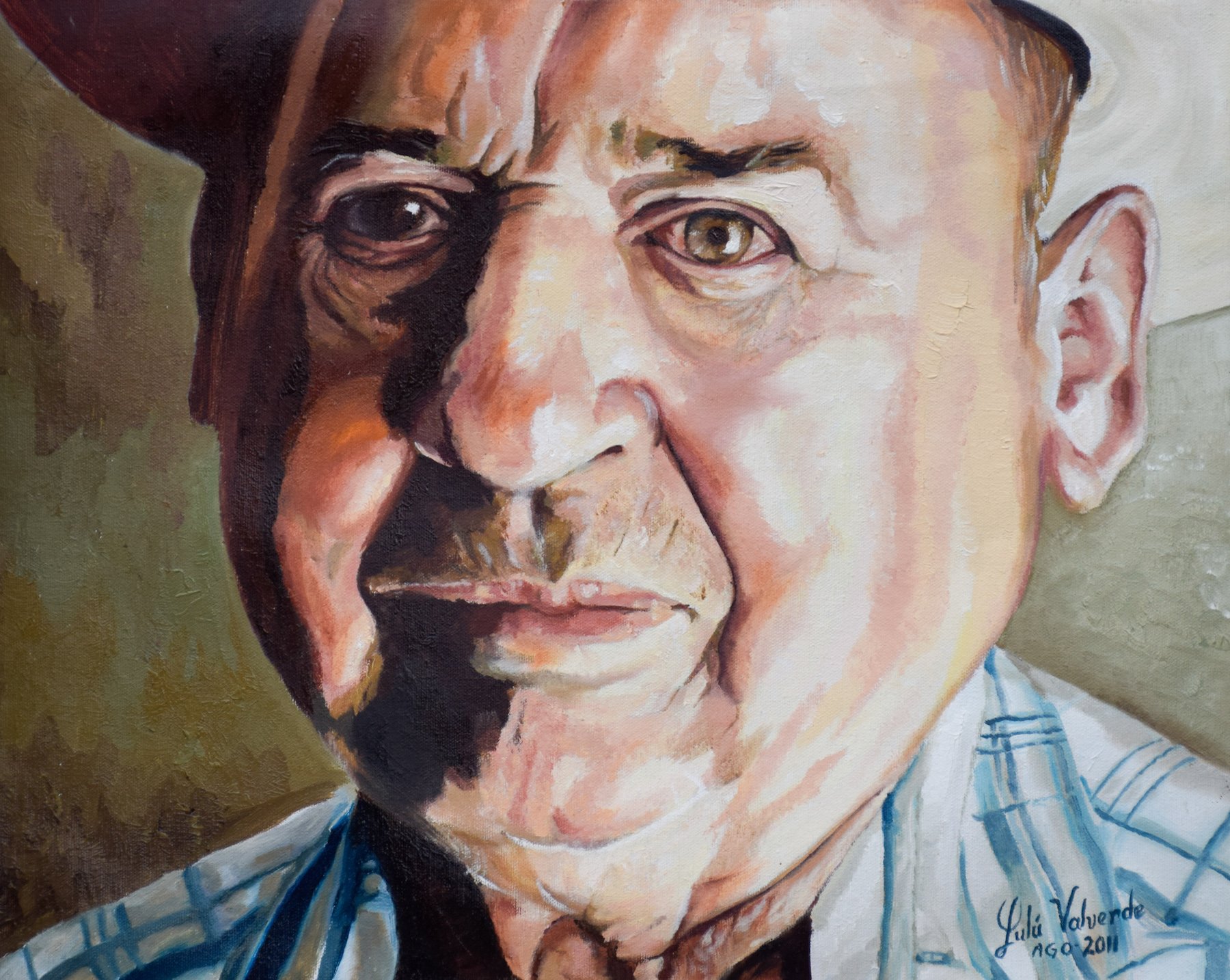
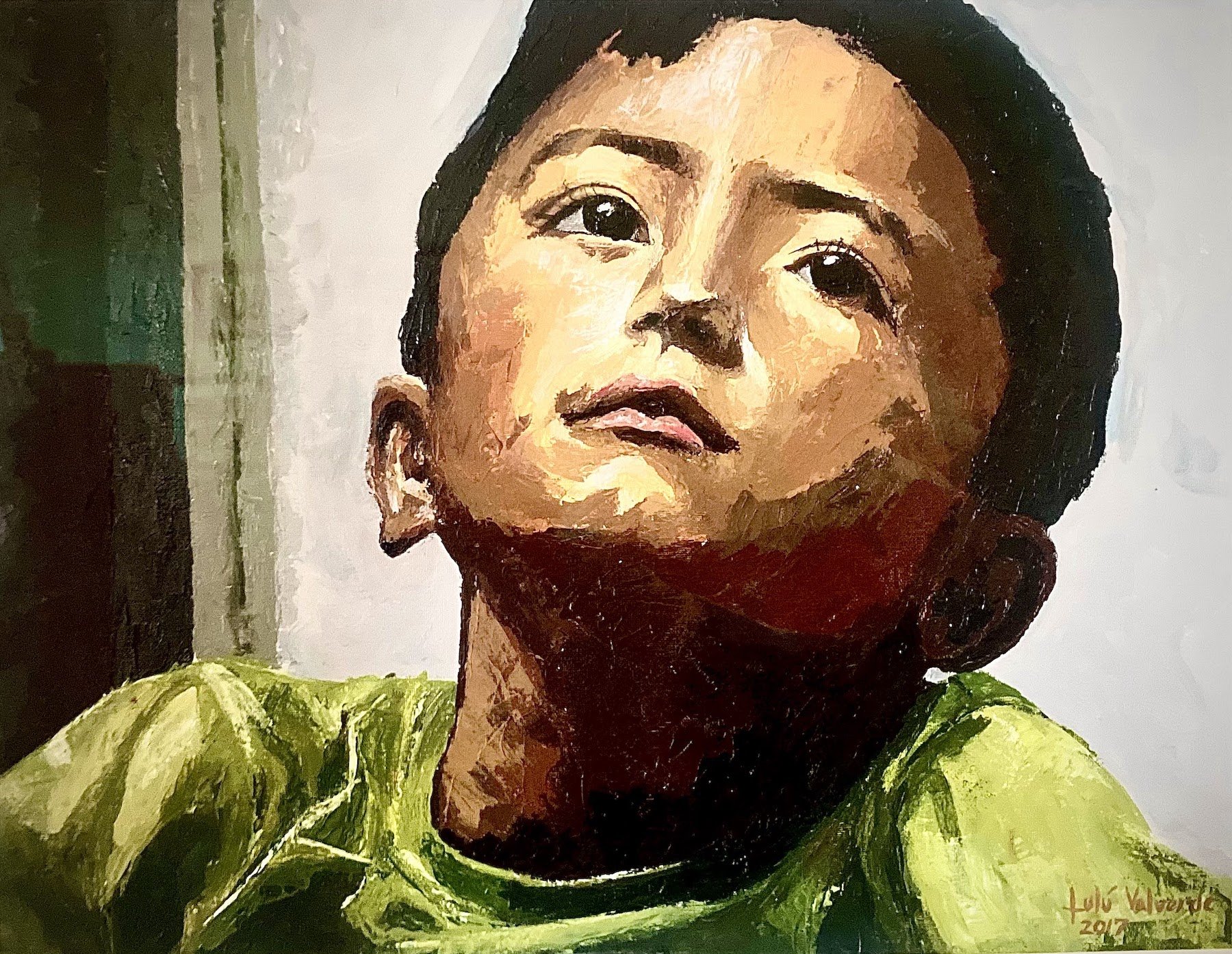
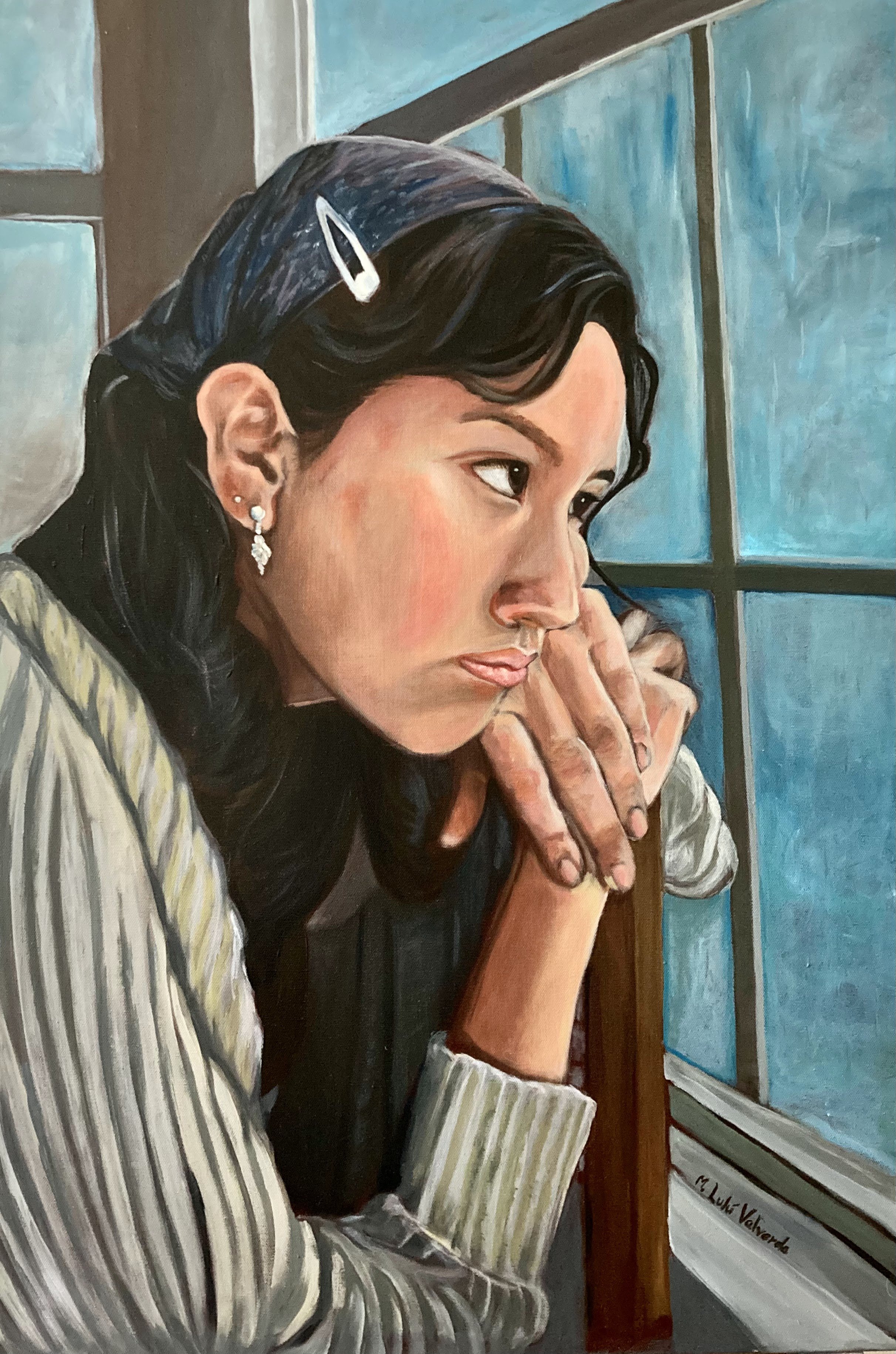

AAS: Tell me about your work at the Museum of Native American History in Bentonville.
LV: As I mentioned, The Museum of Native American History opened its doors to me when I started looking for a space for the Day of the Dead festival. Its director Charlotte is a wonderful person and very lovely. When I started doing the event there, I received all the support and help necessary to make it awesome. In one of the festivals (before COVID-19) we had 1,400 people attend the festival. That was amazing. This festival is now becoming something of a tradition at the museum.
Also, we did another project where I translated into Spanish all the information stations for the visitors’ headsets. I enjoyed this so much because I learned a lot from it. I don’t work in the museum, but we do collaborative projects. Maybe you will see the next one soon.
AAS: You are a fellow at Artist INC, a program of the Mid-America Arts Alliance. Tell me about that program.
LV: Artist INC is a program that helps all artists become professionals. To be an artist is not only the romantic image of painting and having shows consistently. It is a profession and business like all others. You need to be as organized as possible and to take control of your finances and promote yourself. Artist INC is a seminar to teach you how to manage this kind of business. The responsibilities of being a fellow in Artist INC are only to be present and to support each other, to know the resources and opportunities in the organization, and apply them as much as you can.
AAS: Who are some of the artists you admire and are inspired by, and why?
LV: There are some artists I admire not only for their techniques but also because they are brave enough to showcase in their work what they think. Obviously, their technique is amazing, but the most important thing is the content.
Rafael Cauduro. He was a wonderful painter-sculpture-muralist artist that experimented with many different materials. He explored different ways to show his art and the execution was impressive. Sadly, he died this month. We lost a big artist.
Then there is Caravaggio. I love his technique, the darkness, and light, the story in the images, and the colors used. Well, I think he is one of the big ones of all time.
AAS: Lourdes, you mentioned that you have never lost your passion for painting even though sometimes you had to take a break and do other things. What is it about painting that is so important to you?
LV: Painting for me is to speak without speaking. I feel free when I paint – I feel relaxed. It is like everything disappears around me and I am submerged in my own story.
